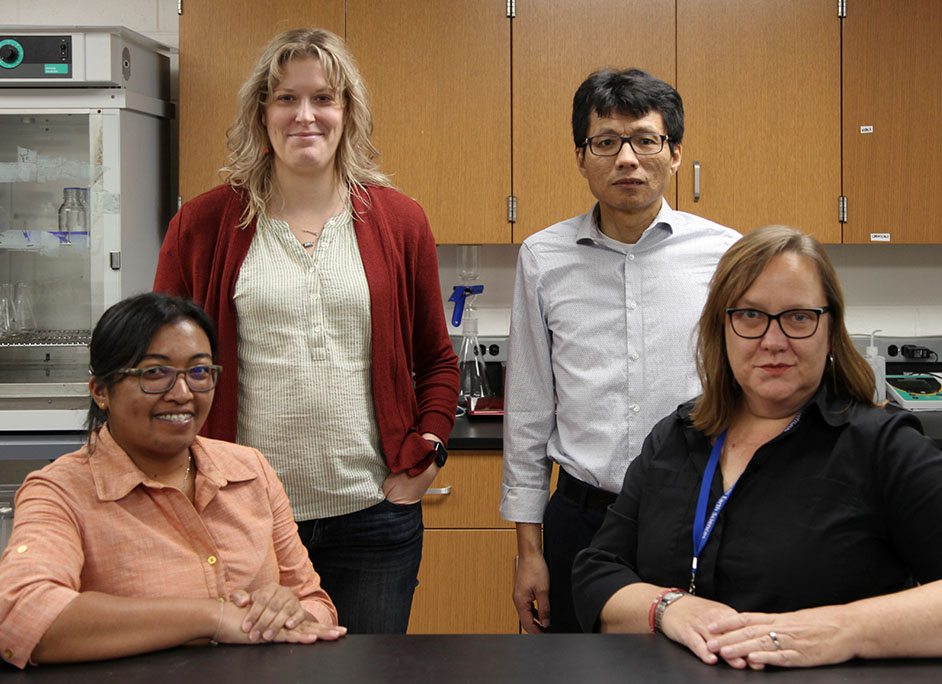Acquisition Enhances Research Capabilities
The Department of Earth and Atmospheric Sciences (EAS) at the University of Houston was awarded a $500,000 grant from the National Science Foundation to support the acquisition of an isotope ratio mass spectrometer (IRMS). This funding is obtained from the agency’s Earth Sciences Instrumentation and Facilities program.

An IRMS is a sophisticated instrument that can measure trivial differences in abundance, usually in parts per thousand, between the same element with different mass numbers, which are called isotopes. For example, the element oxygen with mass numbers of 16, 17, and 18.
Isotopic measurements have long been used as a diagnostic tool to understand geological processes. The new IRMS will bring state of the art measurements to EAS, which has been without an IRMS for several years.
“The acquisition of this modern functioning IRMS at EAS will be a tremendous asset to our ability to perform cutting-edge research,” said Qi Fu, associate professor, the lead principal investigator of this grant. He is joined by three other EAS faculty members as co-principal investigators: Emily Beverly, Julia Wellner, and Ny Riavo G. Voarintsoa.
The new instrument will enable transformative research at UH and stimulate interdisciplinary collaborations within and outside of UH. The projects that the four investigators currently have cover a wide range of areas in Earth Sciences, including organic geochemistry, soil science, paleoclimatology, and marine and glacial geology.
“Having an IRMS on campus will allow our students to spend more time generating data about big picture questions,” said Beverly, assistant professor, whose students primarily work to understand what drove the evolution of our species.
Wellner, who is an associate professor studying Antarctic marine geology, said “My students and I have been working with colleagues at other institutions in order to get data like this. Being able to complete the analyses at UH will dramatically increase what we are able to do.”
This instrument will play a key role in training of early career graduate and undergraduate students through hands-on operation, an integral part of core curricula and research projects at EAS.
“Not only is this new IRMS a top-notch instrument with expanded analytical capabilities, but it is also an effective tool instrumental in advancing research at the PaleoGeochem, Paleoclimate Geochemistry Laboratory, that I lead at EAS. Having it in-house will allow student members of my lab to gain hands-on experience while analyzing their samples for research and thesis purposes,” said Voarintsoa, assistant professor, an expert in reconstructing climate and environmental change in the past using geochemical signatures in geological archives, such as cave and lake sediments.
It is noteworthy that UH is a federally-certified Hispanic-Serving Institution, and Asian American and Native American Pacific Islander-Serving Institution. The new instrument will also be used to support educational and community outreach activities in the greater Houston area. It will contribute to drive historically underrepresented students to pursue career in STEM fields, and enhance our ability to educate the next generation of scientists and engineers.
To accommodate this state-of-the-art instrument, the UH Division of Research (DOR) awarded a Laboratory Renovation/New Lab grant ($547,747) to Fu and Beverly for renovating the Light Stable Isotope Laboratory.
“We truly appreciate NSF for recognizing the urgent need of an IRMS at UH, and DOR for providing renovation funds to this lab,” said Fu.
He also credited the staff members at the research office of the College of Natural Sciences and Mathematics and administration of different levels for supporting both funding requests. Upon completion of lab renovation, the new instrument is expected to start operation by Fall 2023.